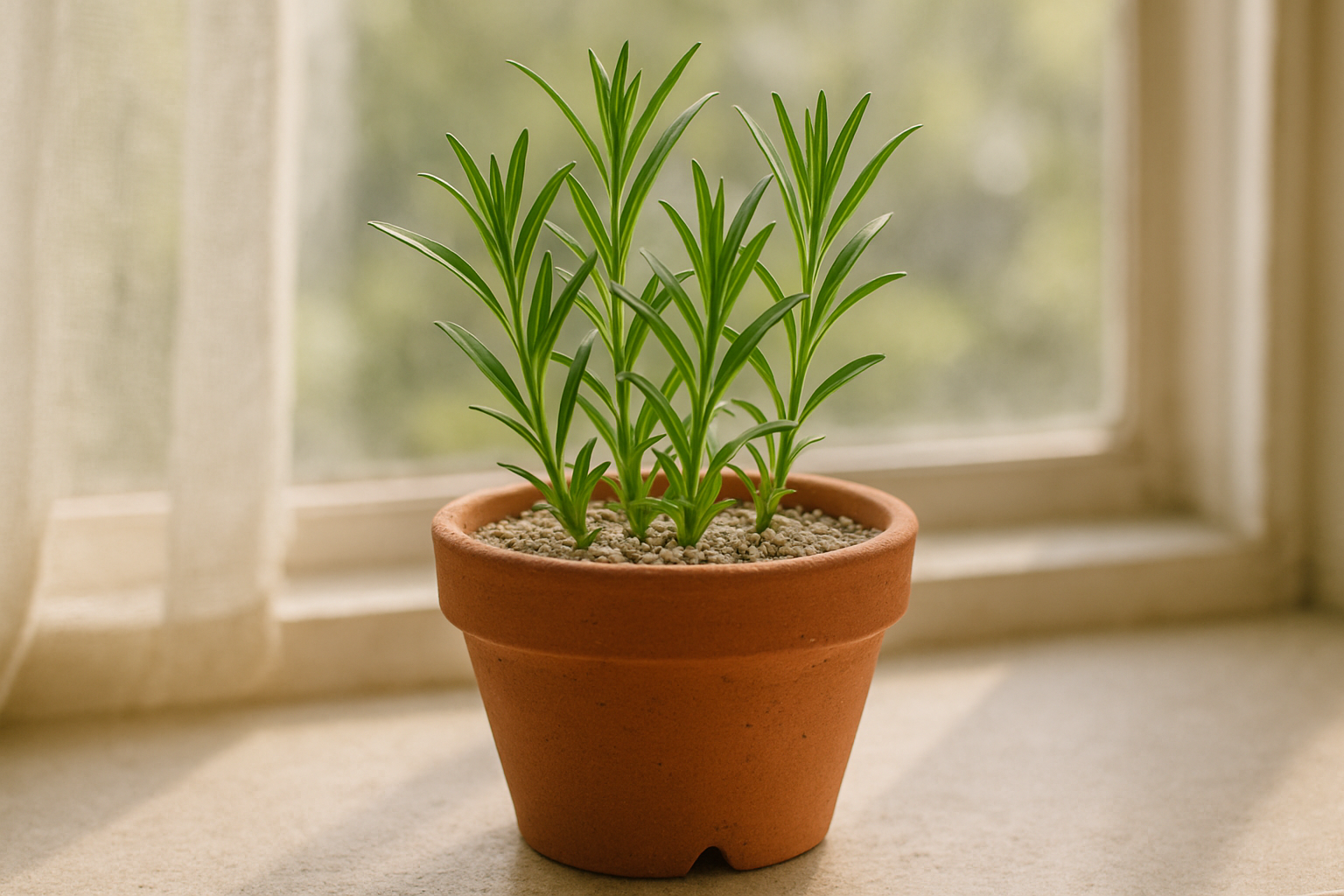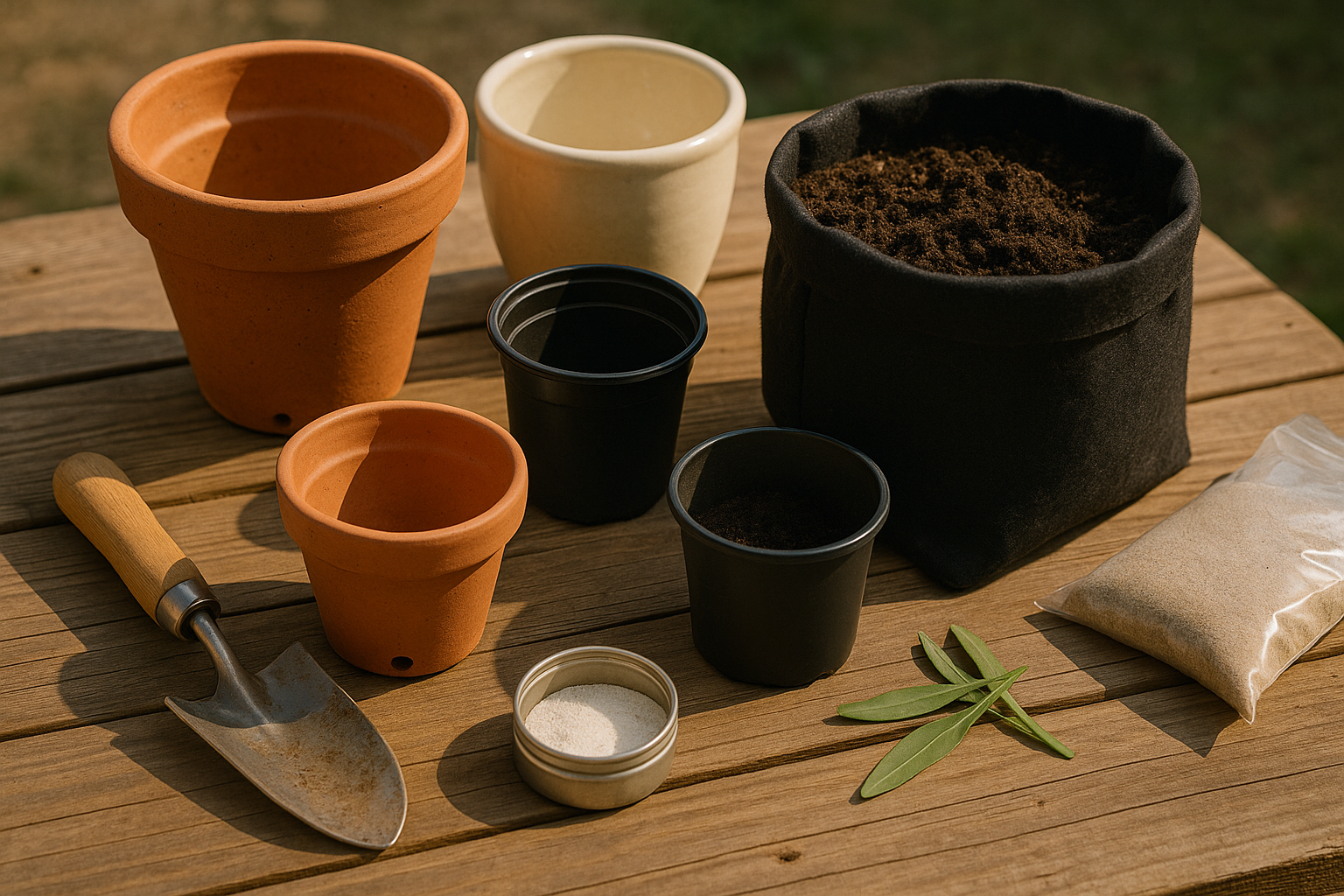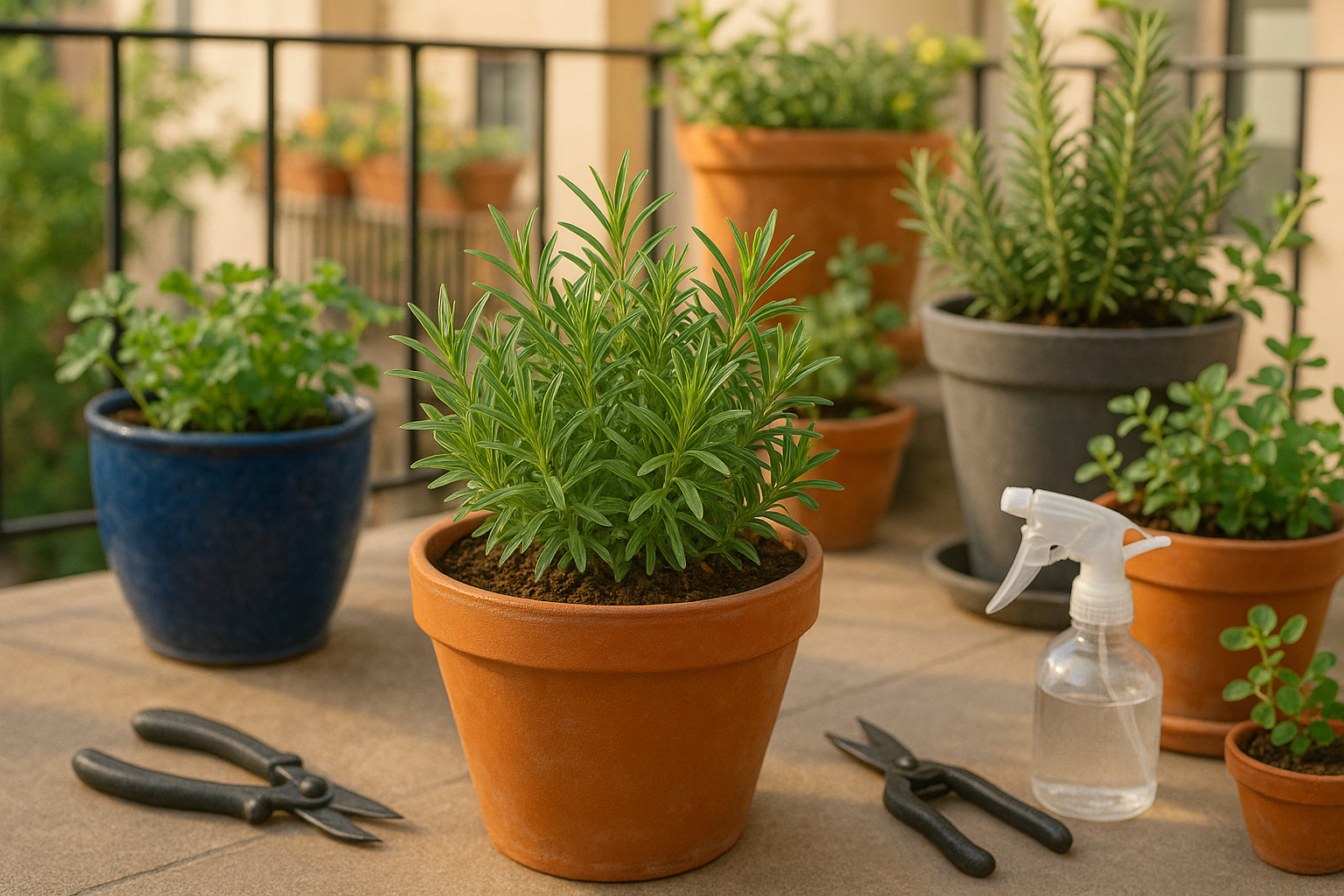Why Grow Tarragon in Containers?

Tarragon is a fragrant, flavorful herb cherished by cooks and gardeners alike for its delicate, anise-like taste that brings French classics like Béarnaise sauce and vinaigrettes to life. Growing tarragon in containers is a smart choice for anyone looking to maximize small spaces or keep an attractive, accessible herb garden year-round.
Containers make it easier to control soil quality, which is essential for tarragon’s preference for well-draining, slightly sandy mixes that can be tricky to replicate in garden beds. This method also creates a barrier against invasive backyard pests and prevents tarragon from getting crowded out by more aggressive plants.
Thanks to their portability, containers allow you to follow the sun around patios, balconies, or windowsills—a big plus for urban gardeners with limited outdoor space or shifting light conditions. If a cold snap threatens, simply move your pot indoors to keep your herb thriving.
Beginners appreciate container growing because it’s easier to water, prune, and monitor herb health up close. Urban dwellers, renters, or those tackling their first kitchen garden will find container-grown tarragon low-maintenance and rewarding.
Plus, it’s an aesthetically pleasing way to keep fresh herbs within arm’s reach for cooking, with no need for a sprawling backyard. Whether you want to add gourmet flavor to meals or enjoy a lush green accent on your windowsill, tarragon in containers offers freshness, flexibility, and control, making it an ideal pick for modern gardeners of every level.
Choosing the Perfect Container

When selecting a container for your tarragon, prioritize one that’s at least 12 inches deep and wide—this gives the herb’s deep but relatively delicate roots plenty of room to stretch and grow. Adequate drainage is essential, so always opt for pots with multiple drainage holes at the bottom; these prevent soggy soil, which tarragon dislikes.
Popular materials each offer unique benefits:
- Terra cotta: Classic and porous, it wicks away excess moisture and keeps roots healthy, but it dries out quickly and can crack in cold weather.
- Ceramic pots: Attractive and sturdy, they retain moisture longer than terra cotta, though they’re more prone to breakage if dropped.
- Plastic containers: Lightweight, affordable, and moisture-retentive—great if you sometimes forget to water. However, they can overheat in full sun.
- Fabric grow bags: An inventive choice offering excellent drainage and airflow to the root zone, though you’ll need to water more often and may need to replace them every couple of seasons.
For a budget-friendly twist, try upcycling: drill holes in the bottom of old buckets, colanders, or large tin cans, or check local thrift stores for inexpensive pots. Just make sure any creative container allows water to escape freely.
By matching your container choice with your climate, watering habits, and style, you’ll set the stage for healthy, flavorful tarragon all season long.
Ideal Potting Mix and Drainage
The secret to thriving tarragon is starting with a light, well-draining potting mix that’s slightly alkaline—think of the airy, loose soils found in Mediterranean herb gardens. Avoid heavy, clay-based soils that retain too much water, as soggy roots lead to root rot and poor growth.
For an easy homemade blend, combine two parts high-quality potting soil with one part coarse sand or perlite for extra drainage. Mix in a tablespoon of garden lime per gallon of soil to gently boost the pH.
When growing tarragon in containers, always choose pots with drainage holes. Add a one-inch layer of gravel or broken pottery shards at the bottom before filling with your mix; this prevents water from pooling around the roots.
If you notice water collecting on the soil surface or roots looking pale and mushy, try adding more perlite or sand next time. Regularly loosen the soil around the base of the plant to keep things airy and prevent compaction. Consider topping with a thin layer of horticultural grit or coarse sand to deter fungal diseases.
With a thoughtful mix and steady drainage, your tarragon will reward you with fresh, aromatic foliage all season long.
Planting and Positioning Tarragon
When growing tarragon in containers, starting with cuttings or young transplants is much more reliable than seeds. True French tarragon rarely produces viable seeds, and seeds often result in inferior Russian tarragon.
To begin, fill a container at least 12 inches wide and deep with well-draining potting soil. Bury transplants or rooted cuttings so the root ball sits just beneath the surface, covering it with about half an inch of soil. Be careful not to crowd your plants—one healthy tarragon plant per container is usually best, as this allows for ample airflow and room for roots to expand fully.
Tarragon loves sunlight, so choose a spot where your container will receive at least six to eight hours of direct sun daily, such as a bright patio or balcony. If growing indoors, a south-facing window or supplemental grow light ensures it gets enough light. In hotter climates, provide some light afternoon shade to prevent leaves from scorching.
Place your container where you can easily snip fresh leaves—close to the kitchen is especially handy for frequent harvests. Good drainage is crucial, so make sure your pot has holes to prevent roots from becoming soggy. Consider elevating the container slightly to improve airflow.
With these steps, your container-grown tarragon will flourish, providing flavorful leaves throughout the season.
Caring for Tarragon in Containers
Caring for tarragon in containers is easy with the right approach to watering and feeding. Tarragon prefers consistently moist, but not soggy, soil. Water your container when the top inch feels dry—just stick your finger into the soil to check. Avoid overwatering by emptying saucers and making sure your pot has drainage holes; soggy roots cause wilting and yellow leaves.
Underwatering is just as risky, leading to droopy leaves with brown edges, so check soil moisture regularly, especially during hot weather. Fertilize tarragon once a month during the growing season with a balanced liquid fertilizer (like 10-10-10) diluted to half strength, since overly rich soil or frequent feeding can dull its flavor. Another good option is slow-release pellets, applied in spring for a steady nutrient supply.
Keep an eye out for yellowing leaves, which may indicate too much water, poor drainage, or overfeeding. If you notice these signs, let the soil dry out a bit and remove yellow leaves to prevent disease. Common pests such as aphids and spider mites often gather in dry, dusty conditions, so keep the foliage clean by occasionally rinsing the leaves with water. If pests persist, use insecticidal soap or a gentle spray made from water and dish soap on the affected areas.
For the best results, regularly rotate your container to ensure even sunlight exposure. Trimming back straggly stems will also help keep your tarragon healthy, bushy, and flavorful all season long.
Harvesting Tarragon & Keeping Plants Productive
Harvesting tarragon at the right time is key to enjoying its signature anise-like flavor at its best. Aim to pick the leaves in the morning, just after the dew has dried but before the midday heat, as this is when the essential oils are most concentrated.
Use sharp scissors or garden shears to snip sprigs from the top third of the plant, leaving at least two-thirds intact so it can continue growing vigorously. Select young, tender stems for the best flavor, and avoid harvesting more than one-third of the plant at a time.
To encourage bushier and healthier growth, regularly pinch off the tips of stems above a pair of leaves. This signals the plant to produce more side shoots, increasing your future yield. Remove any yellowing or damaged leaves promptly to keep the plant focused on healthy new growth.
After each harvest, water your tarragon consistently, but make sure the soil drains well, as tarragon dislikes soggy roots. Applying a light layer of compost every few weeks will replenish soil nutrients and keep the plant robust.
If you’re harvesting frequently, avoid allowing the plant to flower; pinch off flower buds as soon as you spot them, since flowering can make the leaves taste bitter and slow down leaf production.
With these simple care steps, your tarragon will stay lush and productive all season, giving you a steady supply for your kitchen.
Creative Container Gardening Ideas for Tarragon
Growing tarragon in containers opens up endless creative possibilities, whether you’re tight on space or just want a splash of green right where you need it. Try crafting an herb tower—stack a few shallow pots, filling each with soil and planting tarragon alongside faster-growing pals like basil, chives, or parsley. This not only saves space but creates a lush, edible display perfect for a kitchen patio.
If you’re short on outdoor room, a sunny windowsill is tarragon’s best friend. Use rectangular planters to mix tarragon with other delicate herbs like thyme and mint, providing fresh flavors for your recipes year-round.
Upcycling is another fun route: vintage teapots, mason jars, or even old colanders make quirky, drainage-friendly homes for tarragon when you punch a few holes in the bottom.
When pairing herbs, consider how you cook:
- Combine tarragon with parsley and dill for ideal omelet or salad garnishes.
- Pair it with chives and basil for aromatic herb butters.
As fall approaches or if you want fresh tarragon even in colder months, bring containers indoors before the first frost. Place them in a warm, bright spot—south-facing windows are ideal—and give them a trim every few weeks to encourage bushy growth. Just be cautious with watering, since indoor air can be dry and less forgiving.
With a little creativity and planning, tarragon thrives in containers, adding culinary zest and green charm to small spaces all year long.
